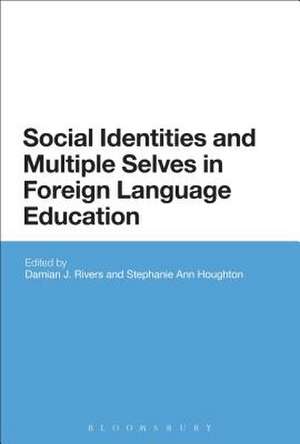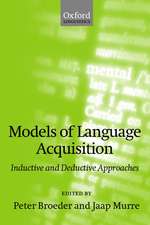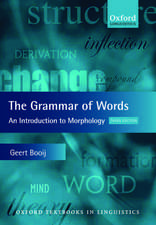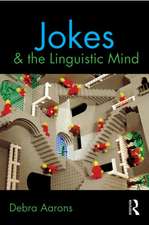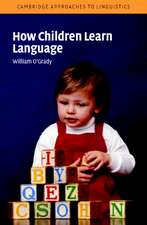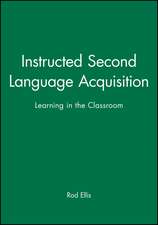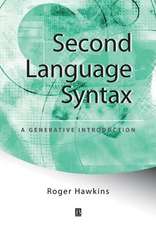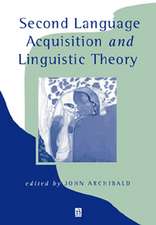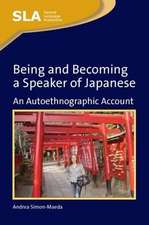Social Identities and Multiple Selves in Foreign Language Education
Editat de Damian J. Rivers, Stephanie Ann Houghtonen Limba Engleză Paperback – 28 ian 2015
| Toate formatele și edițiile | Preț | Express |
|---|---|---|
| Paperback (1) | 257.59 lei 43-57 zile | |
| Bloomsbury Publishing – 28 ian 2015 | 257.59 lei 43-57 zile | |
| Hardback (1) | 949.17 lei 43-57 zile | |
| Bloomsbury Publishing – 17 iul 2013 | 949.17 lei 43-57 zile |
Preț: 257.59 lei
Preț vechi: 295.43 lei
-13% Nou
Puncte Express: 386
Preț estimativ în valută:
49.29€ • 51.60$ • 40.78£
49.29€ • 51.60$ • 40.78£
Carte tipărită la comandă
Livrare economică 07-21 aprilie
Preluare comenzi: 021 569.72.76
Specificații
ISBN-13: 9781474218870
ISBN-10: 1474218873
Pagini: 256
Ilustrații: black & white illustrations
Dimensiuni: 156 x 234 x 14 mm
Greutate: 0.37 kg
Editura: Bloomsbury Publishing
Colecția Bloomsbury Academic
Locul publicării:London, United Kingdom
ISBN-10: 1474218873
Pagini: 256
Ilustrații: black & white illustrations
Dimensiuni: 156 x 234 x 14 mm
Greutate: 0.37 kg
Editura: Bloomsbury Publishing
Colecția Bloomsbury Academic
Locul publicării:London, United Kingdom
Caracteristici
Treats identity development as an important dimension in the development ofintercultural communicative competence.
Notă biografică
Damian J. Rivers is an Associate Professor at Future University Hakodate, Japan Stephanie Ann Houghton is an Associate Professor at Saga University, Japan
Cuprins
Notes on Contributors Introduction: Identities in "Foreign" Language Education, Damian J. Rivers and Stephanie Ann Houghton 1. The Institutional and Beyond: On the Identity Displays of Foreign Language Teachers, Jose Aguilar2. Implications for Identity: Inhabiting the "Native-Speaker" English Teacher Location in the Sociocultural Context of Japan, Damian J. Rivers 3. Professional Identities Shaped by Resistance to Target Language Only Policies, Brian A. McMillan 4. Language, Culture and Identity: Transcultural Practices and Theoretical Implications, Claudia Kunschak and Felix Giron 5. Social Identifications and Culturally Located Identities: Developing Cultural Understanding Through Literature, Melina Porto 6. Re-Imagining Sociolinguistic Identification in Foreign Language Classroom Communities of Practice, Deborah Cole And Bryan Meadows7. The L2 Imagined Learning Community: Developing Identity and Increasing Foreign Language Investment, John W. Schwieter8. Foreign Language Motivation and Social Identity Development, Lou Harvey9. Emotive Accounts of the Self During an Erasmus Sojourn Abroad, Sonia Gallucci 10. Setting Standards for Intercultural Communication: Universalism and Identity Change, Stephanie Ann HoughtonReferences Index
Recenzii
This book is a collection of papers that together offer a bold and refreshingly new take on the many trials and tribulations that ELT professionals across the world-all of them, irrespective of where they come from and what credentials they bring along with them-go through as they negotiate their identities and strive to role-play these new identities against the backdrop of what their profession demands and what the public at large expects of them.
This volume challenges a number of key assumptions made in the field of applied linguistics and pushes the boundaries of research on identity in the context of foreign language learning and teaching.
The major strength of this book is that it brings together research conducted in several different countries, which allows readers to explore additional language identity development in a variety of different settings; this is invaluable because, as Kunschak and Girón exemplify in chapter 4, this process can proceed differently for language learners from different cultures, educational contexts and so on. Though the title of the book may be misleading, the content is not limited to research on foreign language education and includes research on second language settings as well . To sum up, this is a valuable volume for both identity researchers and additional language teaching practitioners.
This volume challenges a number of key assumptions made in the field of applied linguistics and pushes the boundaries of research on identity in the context of foreign language learning and teaching.
The major strength of this book is that it brings together research conducted in several different countries, which allows readers to explore additional language identity development in a variety of different settings; this is invaluable because, as Kunschak and Girón exemplify in chapter 4, this process can proceed differently for language learners from different cultures, educational contexts and so on. Though the title of the book may be misleading, the content is not limited to research on foreign language education and includes research on second language settings as well . To sum up, this is a valuable volume for both identity researchers and additional language teaching practitioners.
